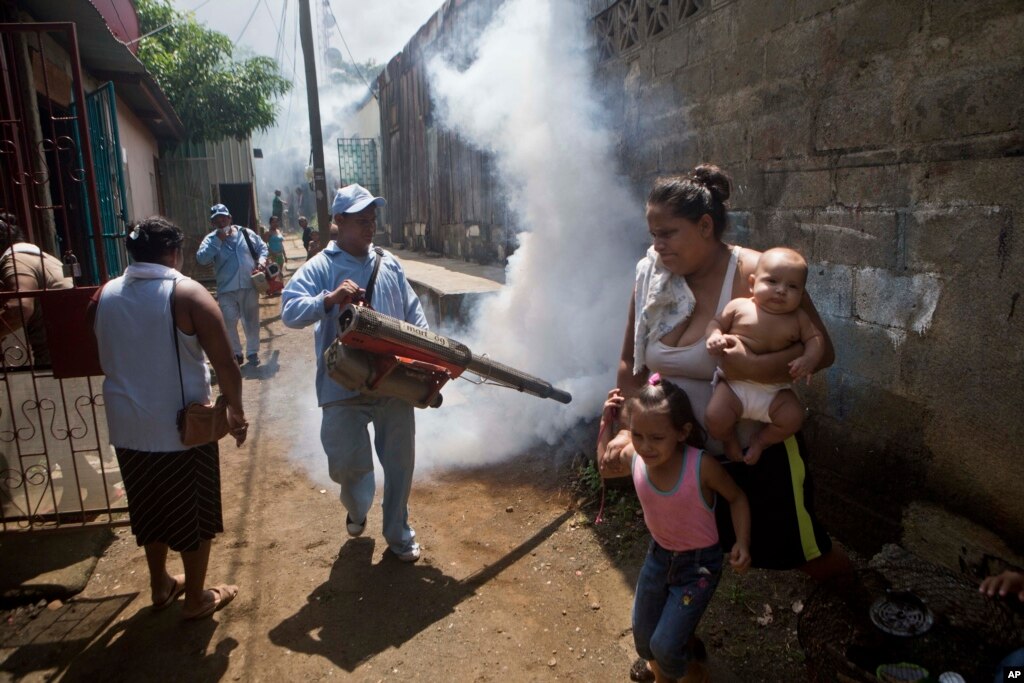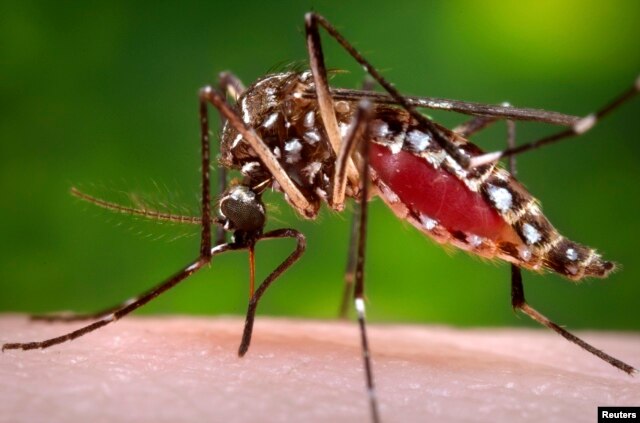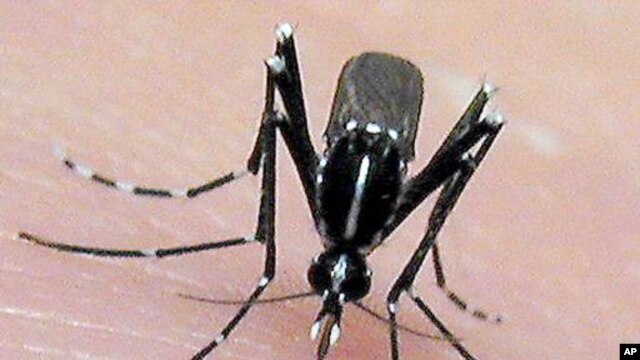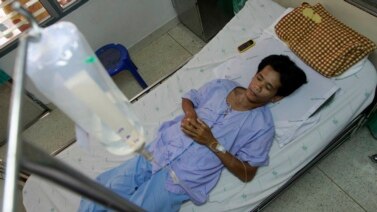
From VOA Learning English, this is the Health and Lifestyle report.
A virus with a strange-sounding name has been around for a long time but only in parts of the world. Now, chikungunya is traveling the world.
Health officials first identified chikungunya in 1952 in East Africa. In the language of that area, chikungunya means “to walk bent over.” That describes people suffering from this disease.
Chikungunya starts like the flu. Sufferers get fever, and head and muscle pain. Some people also develop a skin condition. But what separates chikungunya from other viruses is the extreme pain and swelling in the joints of hands and feet.
Doctor Scott Weaver is director of the Institute for Human Infections and Immunity at the University of Texas in the United States. He explains how this virus differs from other flu-like sicknesses.
“It starts off like many other flu-like infectious diseases with fever and headache and body aches. But what distinguishes it from most others is that the pain is focused on the small joints like the hands, the wrists and the ankles. And that’s accompanied by swelling. And the combination of swelling and pain can leave people pretty severely incapacitated.”
Chikungunya rarely kills. But it can incapacitate people who get it, meaning they can barely move.
Some sufferers complain of joint pain for months -- even years. When this virus infects a community, it has the ability to shut it down. The pain is so severe that people cannot work.
Dr. Weaver talks about its fatality rate, or how many people it kills.
“It’s not normally life threatening. There are a few fatal cases. The case fatality rates recently have been estimated at about one in 1,000 people. But even though it’s not normally fatal, it’s a very painful and debilitating disease that can incapacitate people for weeks to months or even pain can persist for years.”
There is a special danger for pregnant women who get chikungunya. It is possible that the virus infects the baby. Some babies born with chikungunya have swelling of the brain. That can lead to long-term disability.
The viral “stowaway”
The way chikungunya is traveling the world is about mutation.
In 2005 chikungunya left Africa and infected islands in the Indian Ocean, India and Southeast Asia. The virus has a strong foothold in these areas.
But now chikungunya is infecting people in non-tropical areas of the world. Mutation is to blame – mutation and the tiger mosquito. The bite of an infected mosquito causes chikungunya. It is not passed from one person to another.
Again, here is Dr. Weaver explaining how chikungunya is making its way around the world.
“It’s a mosquito-borne virus. It originated in Africa and still circulates there now. Its original transmission cycle involves mosquitos in forest habitats in non-human primates – that’s the main vertebrate host. But periodically it emerges from that cycle into an urban cycle involving people and different kinds of mosquitoes.”

The old chikungunya stowed away, or stole a ride, on the tropical mosquito called Aedes aegypti. This type of mosquito is the most common carrier of chikungunya.
The stronger, mutated chikungunya now stows away in the tiger mosquito.
The tiger mosquito is found in cooler climates. So now, chikungunya has more visas in its passport, so to speak, allowing it to travel to more places with temperate climates such as Europe, China and North America.

And it is traveling. Scientists say chikungunya is a major health threat around the world.
The United States Centers for Disease Control and Prevention advises travelers to the Caribbean Sea area and Central and South America to protect themselves from mosquito bites.
As of February 2015, eight South American countries had reported cases. They are Bolivia, Brazil, Colombia, Ecuador, Guyana, Paraguay, Suriname and Venezuela. Cases were also reported in seven Central American countries. They are Belize, Costa Rica, El Salvador, Guatemala, Honduras, Nicaragua and Panama.
Another veteran virus on the move
Dengue fever is also on the move. And Dengue kills.
The Centers for Disease Control and Prevention estimates as many as 400 million people are infected with dengue each year. The WHO warns that even developed countries like the U.S., Australia and those in Europe are at risk of dengue. The WHO says environmental changes and increased world travel are two reasons dengue is spreading.
Dr. Weaver says chikungunya and dengue infect communities in much the same way, what he calls their “transmission cycles.”
“I think that we will see some cases in the southern U.S. We can predict, I think fairly well, what will happen with chikungunya because it’s a very similar disease and transmission cycle to dengue virus and we have a lot of experience with dengue.”
The signs of dengue include a sudden, high temperature, severe head pain, eye pain and joint and muscle pain. Some people also develop a skin condition. Others may bleed from the mouth and nose.
How to protect yourself against these viruses
To protect against chikungunya and dengue viruses, the CDC suggests covering as much skin as possible. People, especially those working outdoors, should wear long-sleeved shirts, long pants, and hats.
The CDC also suggests the use of anti-insect chemical sprays. They say to avoid strong fragrances or having foods that draw insects near you. It is best to sleep in rooms that mosquitoes cannot enter. If that is not possible, use a covering called a bed net. The bed net should be sprayed with a chemical that kills insects. Finally, mosquitoes can breed in small amounts of still water. So, remove standing water as much as possible.
There is no cure for chikungunya or dengue. But vaccines for both are currently being tested.
And that’s the Health and Lifestyle report.
I’m Anna Matteo.
Words and Their Stories
incapacitate – v. to make (someone or something) unable to work, move, or function in the usual way
foothold – n. a position that makes it possible to begin an activity or effort
tropical – adj. characteristic of a region or climate that is frost-free with temperatures high enough to support year-round plant growth given sufficient moisture
temperate – adj. having temperatures that are not too hot or too cold
climate – n. the usual weather conditions in a particular place or region
Does chikungunya or dengue have a foothold where you live? Let us know in the comments sections.
